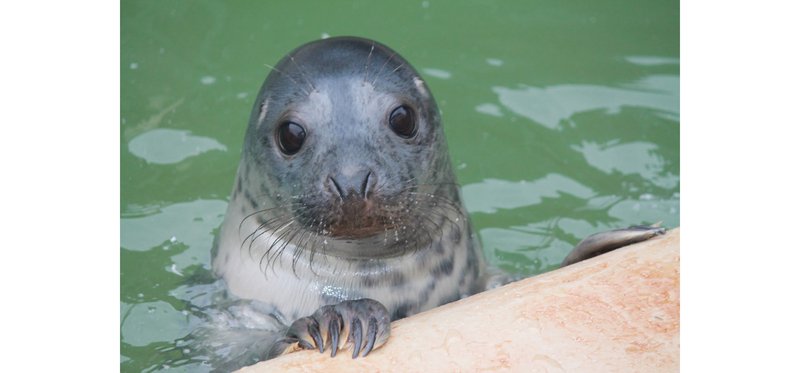
If you have spent any time observing seals at the zoo or in the wild, you may have seen the mammals swimming, walking, clapping, and even "barking" at one another. Now, scientists in Scotland have proved that with some vocal training, and the right incentive, the talented animals are also capable of mimicking the human language, accomplishing impressive tasks such as "singing" popular tunes like "Twinkle, Twinkle Little Star."
Vincent Janik, a biology professor at Scotland's University of St. Andrews and Ph.D. student Amanda Stansbury began working with three gray seals when they were just a few weeks old. They first taught the young pups, named Zola, Janice, and Gandalf, natural seal vocalizations using previously recorded sounds. Each time one of the mammals copied a sound correctly, it was rewarded with a treat. "The seals learned that, hey, if I make the same noise back, I'm going to get a fish," said Stansbury.
Once Zola, Janice, and Gandalf had mastered the natural sounds, the researchers began altering them slightly with the help of a computer. As before, the juvenile mammals were rewarded when they matched the new sounds. Eventually, Stansbury strung some of the notes together into familiar tunes. “We first taught them to produce their own seal sounds in response to our training signals,” said Janik. “We then changed those sounds in the computer to create different pitches and melodies. Once they succeeded in copying these tunes, we presented vowels spoken by a human and transferred to an easier frequency band for the animals.”

Over the 12-month training period, Janice and Gandalf learned how to replicate all possible combinations of the five vowel sounds. Zola, meanwhile, turned out to be a musical prodigy, belting out up to 10 notes of melodies like “Twinkle, Twinkle Little Star” and the tune to the Star Wars theme song.
Though the seals' mimicking prowess has impressed experts worldwide, Stansbury, who now works at the El Paso Zoo in Texas, is not satisfied. The researcher believes she would have been able to teach the animals additional language skills, had she not been required to release them into the wild after 12 months. "We haven't fully studied the full extent and maybe how complex of melodies these guys would be capable of learning," she said.

Seals are not the only animals capable of recreating human sounds. Parrots, ravens, dolphins, and beluga whales have demonstrated the same talent. However, seals are unique because, similar to humans, they use vocal cords to make sounds. “The anatomical structures used for producing vocalizations such as the vocal cords, larynx, and mouth cavities are the same for seals and humans,” Janik told Gizmodo. “Other vocal learners use different structures. Birds, for example, do not have a larynx but a different structure called a syrinx to produce sounds. Dolphins use muscles in their nasal air passages to produce learned sounds.”
The researchers, who published their findings in the journal Current Biology on June 20, 2019, believe the study will provide insights into how mammals learn sounds. Janik says, "Finding other mammals that use their vocal tract in the same way as us to modify sounds informs us on how vocal skills are influenced by genetics and learning and can ultimately help to develop new methods to study speech disorders." We wonder if Janice, Gandalf, and Zola are passing on their newly-learned language skills to other members of their species!
Resources: Smithsonianmag.com, NPR.org, Gizmodo.com
